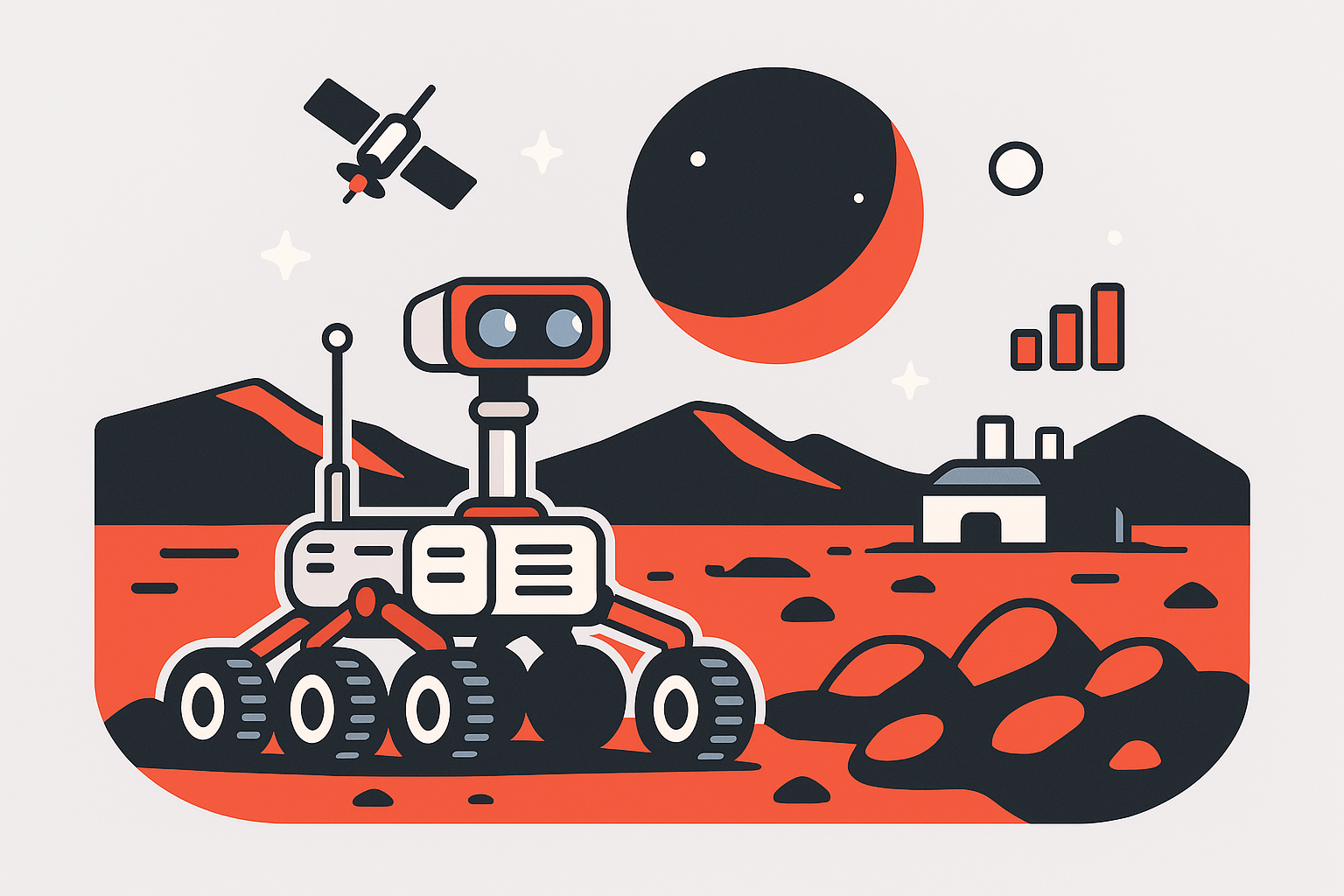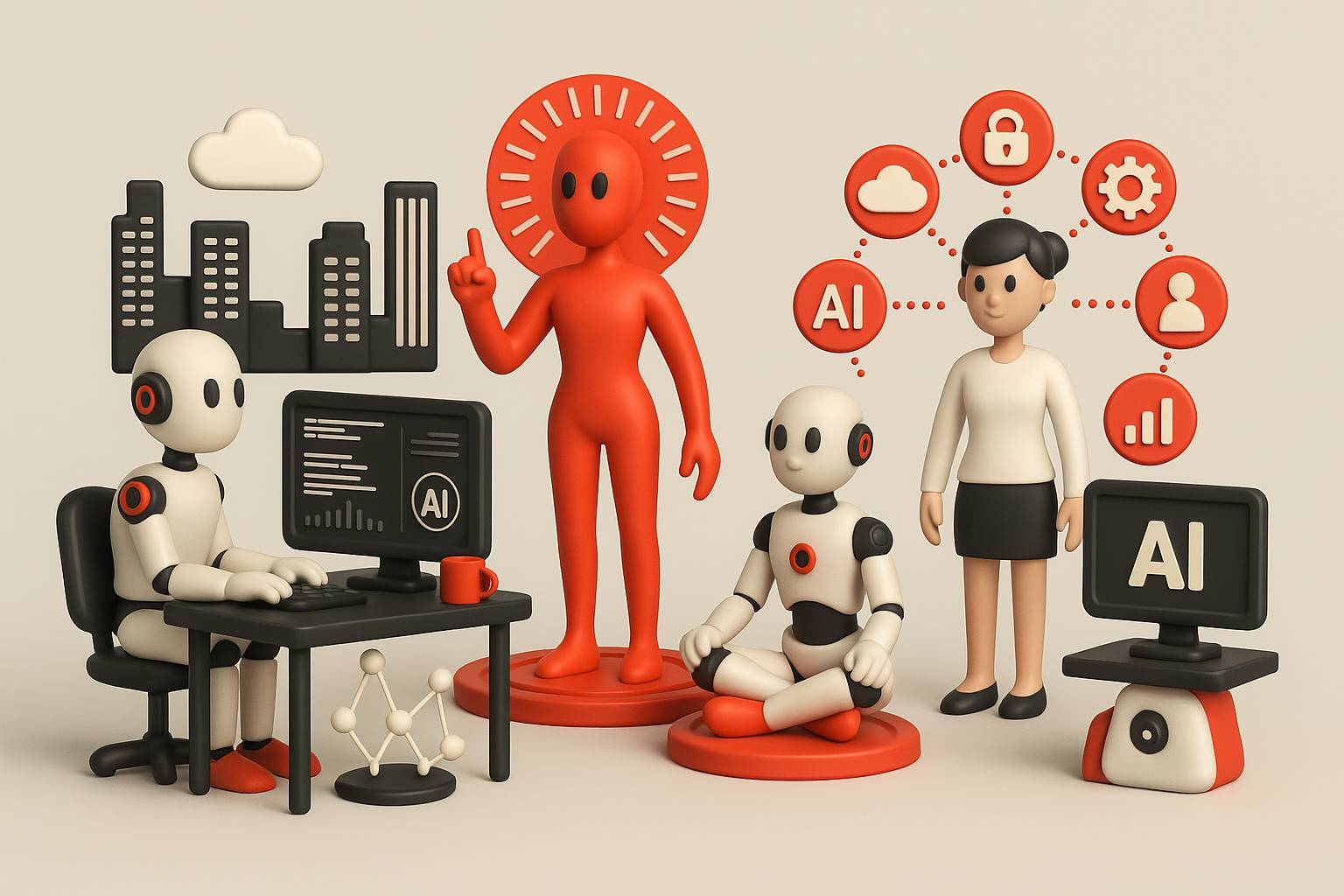How will AI companions evolve from personal assistants into true collaborators?
For years, AI companions have lived in our pockets and homes—managing calendars, setting reminders, and answering quick questions. But the next chapter goes beyond assistance: AI companions are evolving into true collaborators, capable of reasoning, co-creating, and even making decisions alongside humans.
🤖 Instead of just following instructions, these next-gen companions will anticipate needs, offer strategic input, and adapt to individual working styles.
🔍 𝐇𝐞𝐫𝐞’𝐬 𝐡𝐨𝐰 𝐀𝐈 𝐜𝐨𝐦𝐩𝐚𝐧𝐢𝐨𝐧𝐬 𝐚𝐫𝐞 𝐬𝐡𝐢𝐟𝐭𝐢𝐧𝐠 𝐟𝐫𝐨𝐦 𝐡𝐞𝐥𝐩𝐞𝐫𝐬 𝐭𝐨 𝐜𝐨-𝐩𝐚𝐫𝐭𝐧𝐞𝐫𝐬:
✅ 𝐂𝐨-𝐂𝐫𝐞𝐚𝐭𝐢𝐯𝐞 𝐏𝐚𝐫𝐭𝐧𝐞𝐫𝐬
From brainstorming business strategies to drafting design concepts, AI collaborators contribute fresh perspectives—expanding human creativity.
✅ 𝐃𝐨𝐦𝐚𝐢𝐧-𝐒𝐩𝐞𝐜𝐢𝐟𝐢𝐜 𝐄𝐱𝐩𝐞𝐫𝐭𝐢𝐬𝐞
AI companions will evolve into specialists—whether in law, medicine, coding, or finance—offering context-rich advice tailored to professional workflows.
✅ 𝐄𝐦𝐨𝐭𝐢𝐨𝐧𝐚𝐥 𝐈𝐧𝐭𝐞𝐥𝐥𝐢𝐠𝐞𝐧𝐜𝐞
Next-gen AI won’t just process facts—they’ll recognize tone, intent, and human emotions, making interactions more natural and empathetic.
✅ 𝐏𝐫𝐨𝐚𝐜𝐭𝐢𝐯𝐞 𝐂𝐨𝐥𝐥𝐚𝐛𝐨𝐫𝐚𝐭𝐢𝐨𝐧
Rather than waiting for commands, AI will predict challenges, suggest solutions, and act as a true partner in problem-solving.
✅ 𝐒𝐞𝐚𝐦𝐥𝐞𝐬𝐬 𝐇𝐮𝐦𝐚𝐧 + 𝐀𝐈 𝐓𝐞𝐚𝐦𝐬
As work becomes hybrid, AI collaborators will manage context-switching across tools, teams, and projects—helping humans stay focused on high-value tasks.
📌 𝐓𝐡𝐞 𝐁𝐢𝐠 𝐏𝐢𝐜𝐭𝐮𝐫𝐞:
AI companions are moving from tools to teammates. The future won’t just be about humans delegating tasks—it will be about humans and AI working side by side, co-creating solutions, and amplifying one another’s strengths.
🔗 Read More: https://technologyaiinsights.com/
📣 About AI Technology Insights (AITin):
AI Technology Insights (AITin) is the fastest-growing global community of thought leaders, influencers, and researchers specializing in AI, Big Data, Analytics, Robotics, Cloud Computing, and related technologies. Through its platform, AITin offers valuable insights from industry executives and pioneers who share their journeys, expertise, success stories, and strategies for building profitable, forward-thinking businesses.
For years, AI companions have lived in our pockets and homes—managing calendars, setting reminders, and answering quick questions. But the next chapter goes beyond assistance: AI companions are evolving into true collaborators, capable of reasoning, co-creating, and even making decisions alongside humans.
🤖 Instead of just following instructions, these next-gen companions will anticipate needs, offer strategic input, and adapt to individual working styles.
🔍 𝐇𝐞𝐫𝐞’𝐬 𝐡𝐨𝐰 𝐀𝐈 𝐜𝐨𝐦𝐩𝐚𝐧𝐢𝐨𝐧𝐬 𝐚𝐫𝐞 𝐬𝐡𝐢𝐟𝐭𝐢𝐧𝐠 𝐟𝐫𝐨𝐦 𝐡𝐞𝐥𝐩𝐞𝐫𝐬 𝐭𝐨 𝐜𝐨-𝐩𝐚𝐫𝐭𝐧𝐞𝐫𝐬:
✅ 𝐂𝐨-𝐂𝐫𝐞𝐚𝐭𝐢𝐯𝐞 𝐏𝐚𝐫𝐭𝐧𝐞𝐫𝐬
From brainstorming business strategies to drafting design concepts, AI collaborators contribute fresh perspectives—expanding human creativity.
✅ 𝐃𝐨𝐦𝐚𝐢𝐧-𝐒𝐩𝐞𝐜𝐢𝐟𝐢𝐜 𝐄𝐱𝐩𝐞𝐫𝐭𝐢𝐬𝐞
AI companions will evolve into specialists—whether in law, medicine, coding, or finance—offering context-rich advice tailored to professional workflows.
✅ 𝐄𝐦𝐨𝐭𝐢𝐨𝐧𝐚𝐥 𝐈𝐧𝐭𝐞𝐥𝐥𝐢𝐠𝐞𝐧𝐜𝐞
Next-gen AI won’t just process facts—they’ll recognize tone, intent, and human emotions, making interactions more natural and empathetic.
✅ 𝐏𝐫𝐨𝐚𝐜𝐭𝐢𝐯𝐞 𝐂𝐨𝐥𝐥𝐚𝐛𝐨𝐫𝐚𝐭𝐢𝐨𝐧
Rather than waiting for commands, AI will predict challenges, suggest solutions, and act as a true partner in problem-solving.
✅ 𝐒𝐞𝐚𝐦𝐥𝐞𝐬𝐬 𝐇𝐮𝐦𝐚𝐧 + 𝐀𝐈 𝐓𝐞𝐚𝐦𝐬
As work becomes hybrid, AI collaborators will manage context-switching across tools, teams, and projects—helping humans stay focused on high-value tasks.
📌 𝐓𝐡𝐞 𝐁𝐢𝐠 𝐏𝐢𝐜𝐭𝐮𝐫𝐞:
AI companions are moving from tools to teammates. The future won’t just be about humans delegating tasks—it will be about humans and AI working side by side, co-creating solutions, and amplifying one another’s strengths.
🔗 Read More: https://technologyaiinsights.com/
📣 About AI Technology Insights (AITin):
AI Technology Insights (AITin) is the fastest-growing global community of thought leaders, influencers, and researchers specializing in AI, Big Data, Analytics, Robotics, Cloud Computing, and related technologies. Through its platform, AITin offers valuable insights from industry executives and pioneers who share their journeys, expertise, success stories, and strategies for building profitable, forward-thinking businesses.
How will AI companions evolve from personal assistants into true collaborators?
For years, AI companions have lived in our pockets and homes—managing calendars, setting reminders, and answering quick questions. But the next chapter goes beyond assistance: AI companions are evolving into true collaborators, capable of reasoning, co-creating, and even making decisions alongside humans.
🤖 Instead of just following instructions, these next-gen companions will anticipate needs, offer strategic input, and adapt to individual working styles.
🔍 𝐇𝐞𝐫𝐞’𝐬 𝐡𝐨𝐰 𝐀𝐈 𝐜𝐨𝐦𝐩𝐚𝐧𝐢𝐨𝐧𝐬 𝐚𝐫𝐞 𝐬𝐡𝐢𝐟𝐭𝐢𝐧𝐠 𝐟𝐫𝐨𝐦 𝐡𝐞𝐥𝐩𝐞𝐫𝐬 𝐭𝐨 𝐜𝐨-𝐩𝐚𝐫𝐭𝐧𝐞𝐫𝐬:
✅ 𝐂𝐨-𝐂𝐫𝐞𝐚𝐭𝐢𝐯𝐞 𝐏𝐚𝐫𝐭𝐧𝐞𝐫𝐬
From brainstorming business strategies to drafting design concepts, AI collaborators contribute fresh perspectives—expanding human creativity.
✅ 𝐃𝐨𝐦𝐚𝐢𝐧-𝐒𝐩𝐞𝐜𝐢𝐟𝐢𝐜 𝐄𝐱𝐩𝐞𝐫𝐭𝐢𝐬𝐞
AI companions will evolve into specialists—whether in law, medicine, coding, or finance—offering context-rich advice tailored to professional workflows.
✅ 𝐄𝐦𝐨𝐭𝐢𝐨𝐧𝐚𝐥 𝐈𝐧𝐭𝐞𝐥𝐥𝐢𝐠𝐞𝐧𝐜𝐞
Next-gen AI won’t just process facts—they’ll recognize tone, intent, and human emotions, making interactions more natural and empathetic.
✅ 𝐏𝐫𝐨𝐚𝐜𝐭𝐢𝐯𝐞 𝐂𝐨𝐥𝐥𝐚𝐛𝐨𝐫𝐚𝐭𝐢𝐨𝐧
Rather than waiting for commands, AI will predict challenges, suggest solutions, and act as a true partner in problem-solving.
✅ 𝐒𝐞𝐚𝐦𝐥𝐞𝐬𝐬 𝐇𝐮𝐦𝐚𝐧 + 𝐀𝐈 𝐓𝐞𝐚𝐦𝐬
As work becomes hybrid, AI collaborators will manage context-switching across tools, teams, and projects—helping humans stay focused on high-value tasks.
📌 𝐓𝐡𝐞 𝐁𝐢𝐠 𝐏𝐢𝐜𝐭𝐮𝐫𝐞:
AI companions are moving from tools to teammates. The future won’t just be about humans delegating tasks—it will be about humans and AI working side by side, co-creating solutions, and amplifying one another’s strengths.
🔗 Read More: https://technologyaiinsights.com/
📣 About AI Technology Insights (AITin):
AI Technology Insights (AITin) is the fastest-growing global community of thought leaders, influencers, and researchers specializing in AI, Big Data, Analytics, Robotics, Cloud Computing, and related technologies. Through its platform, AITin offers valuable insights from industry executives and pioneers who share their journeys, expertise, success stories, and strategies for building profitable, forward-thinking businesses.
0 Комментарии
0 Поделились




